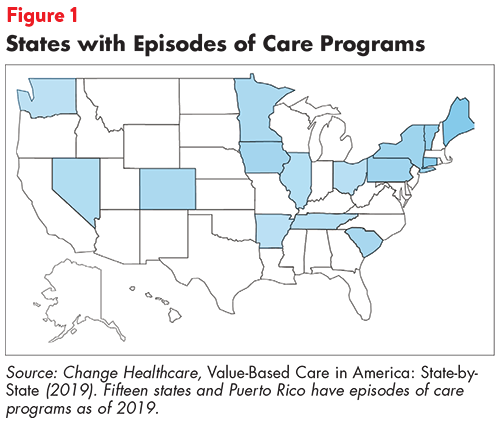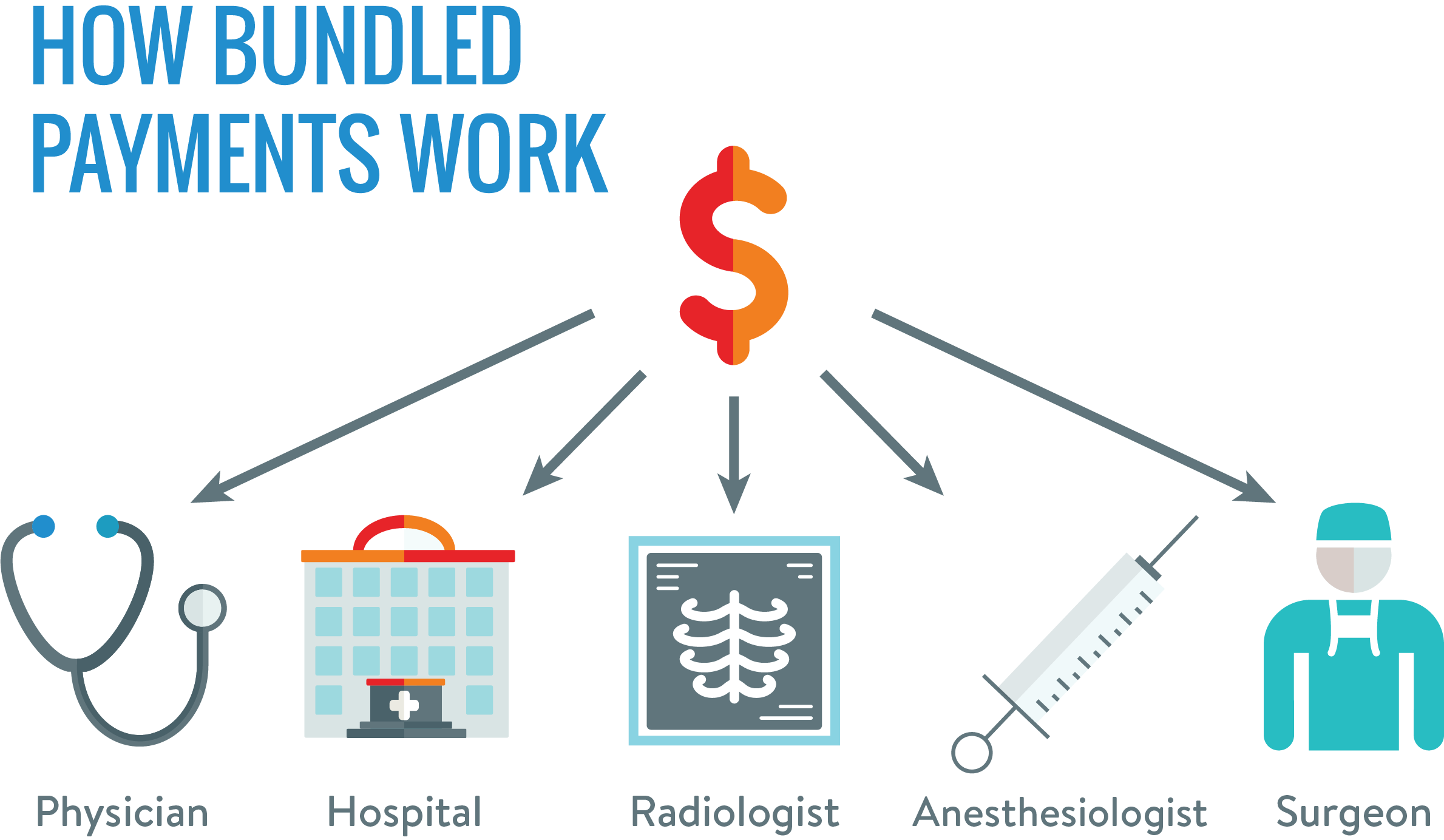Improving Value
Bundled Payments
Bundled payments are a fixed payment that covers all services delivered by providers to treat a given condition or provide a given treatment. Bundles can take different forms, for example, Condition-Specific Capitation and Episode Based Payments. Bundled payments are a central component of public and private payers' efforts to transition from volume- to value-based care. The goal of bundled payments is to incentivize the different providers involved in a patient's course of treatment (called an episode of care) to, collectively, deliver high-quality care at a lower cost. Theoretically, this is accomplished by paying the providers a lump sum for all of the services they provide in a given episode and withholding reimbursement for costs in excess of that amount. Groups of providers who, collectively, deliver care for less than the set amount (while meeting quality standards) can share in the savings, incentivizing them to make cost-effective care decisions.
Bundled payments target specialists, who have traditionally been less likely than primary care physicians to participate in value-based payment models. The vast majority of experimentation, to date, has occurred within the Medicare program. As of 2019, bundled payment models in Medicare include:
- Bundled Payments for Care Improvement (BPCI) — Models 1-4
- Comprehensive Care for Joint Replacement (CJR)
- Oncology Care Model (OCM)
- Bundled Payment for Care Improvement — Advanced (BPCI Advanced)
Additionally, fifteen states and Puerto Rico have implemented some form of episodes of care programs as of 2019.

Evidence suggests that bundled payments may be well suited for surgical procedures, particularly those that are non-urgent and exhibit wide cost variation despite relatively consistent quality. Bundles have generally been less successful when applied to care for medical conditions and "complex" patients with co-morbidities.
More research is needed to assess bundled payments' long-term impact, understand why they have been less successful for medical conditions and identify specific conditions that are a good fit for bundled payment models. Future studies should also compare bundled payments to other alternative payment models to derermine which best incentivize providers to meet cost and quality goals. For example, comparative research is lacking with regards to bundled payments and global budgets, which prospectively pay providers a lump sum annually to address the needs of a given population. Finally, future research should aim to identify successful strategies for coordinating bundled payments across payers so that providers face uniform incentives across their patient population.
Given these unknowns and the relatively recent implementation of the "new and improved" BPCI Advanced, bundled payments will likely remain an important part of the alternative payment model toolbox for several years to come.
- Health Affairs: Medicare's Bundled Payments for Care Improvement Initiative Maintained Quality of Care for Vulnerable Patients (April 2019).
- Health Affairs Blog: Policy Trends That May Drive Different Care Redesign for Procedural Versus Nonprocedural Bundles (April 11, 2019).
- Healthcare Value Hub: Consumer-Focused Health System Transformation: What are the Policy Priorities? (March 2019).
- Leonard Davis Institute of Health Economics: The Current State of Evidence on Bundled Payments (Oct. 8, 2018).
- The New England Journal of Medicine: Evaluation of Medicare's Bundled Payments Initiative for Medical Conditions (July 19, 2018).
- RevCycle Intelligence: Understanding the Basics of Bundled Payments in Healthcare: How Do Bundled Payments Fit Into the Growing Value-Based Reimbursement Ecosystem? (July 2016).








